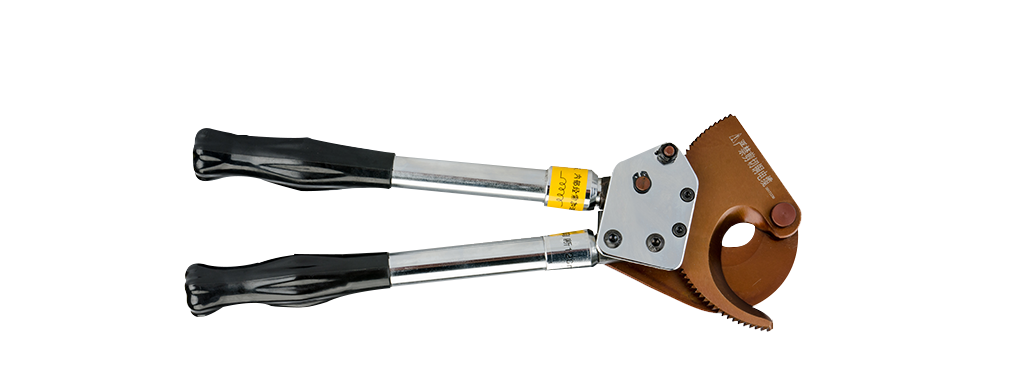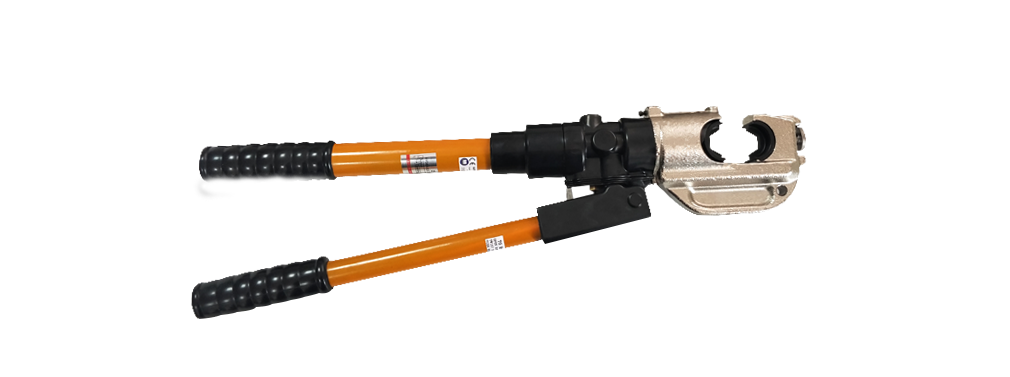 2020.04.11
2020.04.11
 Industry News
Industry News
Commonly used electrician's pliers include wire cutters, wire strippers and needle-nose pliers.
a. Wire cutters:
Wire cutters are a kind of clamping and cutting tools, which have many uses: the jaws on the pliers head are used to bend or clamp the wire end, the tooth mouth is used to rotate the nut, and the knife edge is used to cut the wire or cut the flexible wire Insulation layer, guillotine mouth is used to cut hard wire.
Matters needing attention when using wire cutters:
1. The insulation sheath of wire cutters is generally 500V. Check the insulation performance of the handle when using it. If the insulation is damaged, electric shock may occur during live work.
2. During live operation, the distance between the hand and the metal part should not be less than 2cm to ensure personal safety.
3. When cutting live wires, it is strictly forbidden to cut the phase and neutral wires at the same time with a knife edge, or to cut two phase wires at the same time to avoid short circuit accidents.
4. The tong shaft should be lubricated frequently to prevent rust.

b. Needle nose pliers:
The needle nose pliers have a thin head and are suitable for operation in a small space. The needle nose pliers also have two types of iron handles and insulated handles. The withstand voltage of the insulated handle is 500V.
Notes on using needle-nose pliers:
1. When the insulated handle is damaged, it cannot be used to cut the live wire.
2. To ensure safety, the distance between the hand and the metal part should not be less than 2cm.
3. The pliers head is relatively thin and heat-treated, so the objects to be clamped should not be too large. Do not use excessive force when applying force to prevent damage to the pliers.
4. Pay attention to moisture, the lubricator shaft should be lubricated frequently to prevent rust.

c. Wire stripper:
The wire stripper is a special tool used to strip the insulation layer of plastic or rubber insulated wires with a cross-sectional area of 6 square millimeters or less. Divided into multiple diameter cuts of 0.5-3m, it is used to strip core wires of different specifications.
Precautions for using wire strippers:
1. The selected cut diameter must be greater than the core diameter, that is, the wire must be cut on the cut larger than the core diameter, and the large diameter wire cannot be stripped with a small cut to avoid cutting the core wire.
2. The wire stripper should not be used as a wire cutter to avoid damage to the cut.
3. During live operation, check whether the insulation of the handle is good to prevent electric shock.
Precautions for the use of electrician's pliers
1. Before measuring, check whether the rubber insulation of the clamp core is intact and intact. The jaws should be clean and rust-free, and there is no obvious gap after closing.
2. When measuring, the size of the measured current should be estimated , and the appropriate range should be selected. If it cannot be estimated, the larger range can be selected , and then reduced step by step to switch to the appropriate gear. In the case of or when the jaws are opened, because switching the gear during the measurement process will open the secondary side at the moment of switching, causing damage to the instrument and even endangering personal safety.
3. The clamp meter should be used for measurement in the absence of thunderstorms and dry weather. It can be carried out by two people. One person operates one person and monitors. During the measurement, pay attention to wearing personal protective equipment and pay attention to maintaining a sufficient safe distance between the human body and the live part.
4. When measuring, the tested wire should be placed in the middle of the jaws as much as possible. If there is noise in the joint surface of the jaws, it should be opened and closed again. There is still noise. In addition, do not clamp two wires at the same time.
5. When measuring the current below, in order to get a more accurate reading, when the conditions permit, the wire can be wound a few more times and placed in the jaw to measure. The actual current value should be the meter reading divided by the wire placed in the jaw The number of.
6. If measuring a small current immediately after measuring a large current, the iron core should be opened and closed several times to eliminate residual magnetism in the iron core and reduce errors.
7. Before and after each measurement, the switch for adjusting the current range should be placed at the high position to avoid damage to the instrument when the measurement is not selected during the next use.
8. Clamp ammeter is different from ordinary ammeter. It consists of current transformer and ammeter. It can measure load current without disconnecting the circuit, but it is only used when the measured line voltage does not exceed 500V.
Treatment method of electrician pliers rust
Electrician's common tools Electrician's pliers often become unopened due to rust and other reasons, which is inconvenient to use. The following introduces a simple treatment method. Put the electrician's pliers into the washing powder water, soak it for a few minutes, and then move in the water several times Pliers until the electrician's pliers can move freely. Finally, take out the electrician's pliers and dry them quickly in the sun to avoid rusting again. I have tried many times and the effect is very good.